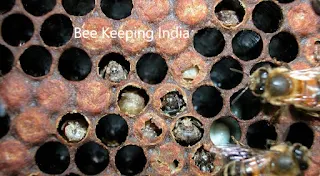Role of Bee Keeping
Bees play an important role in our ecosystem, but they are increasingly facing a health crisis. One of the most common issues that beekeepers encounter is brood disease. Brood disease can have serious consequences for hives, so it is important for beekeepers to know how to identify and treat it. In this paragraph, we will discuss some of the most effective strategies for dealing with brood disease in bees.
Disease Challenges
Beekeeping can be a rewarding hobby, but it's not without its challenges. One such challenge is brood disease, which can devastate a hive if left unchecked. Fortunately, there are steps you can take to identify and treat brood disease in your bees. One of the most effective methods is to practice good hive hygiene, including regularly cleaning and inspecting your equipment.
Reason for disease
Brood disease is not a single, specific condition, but rather a group of illnesses that can impact bee larvae. The primary reason behind the development of these diseases is poor hive hygiene. If hives aren't cleaned out regularly, mold and fungus can build up, creating a breeding ground for harmful bacteria and viruses that can infect bee larvae. Other factors that can contribute to the development of brood disease include overcrowding in the hive, inadequate nutrition, and exposure to pesticides.
Treatment of brood disease
If you suspect that your bees are suffering from brood disease, it's important to take action quickly to prevent the spread and minimize the damage to your hive. The first step is to confirm the diagnosis by examining the affected brood and identifying any symptoms. Once you have a firm diagnosis, you'll need to begin treatment immediately. One effective treatment is to remove and destroy any infected brood, and replace it with healthy brood or bees from another colony.

